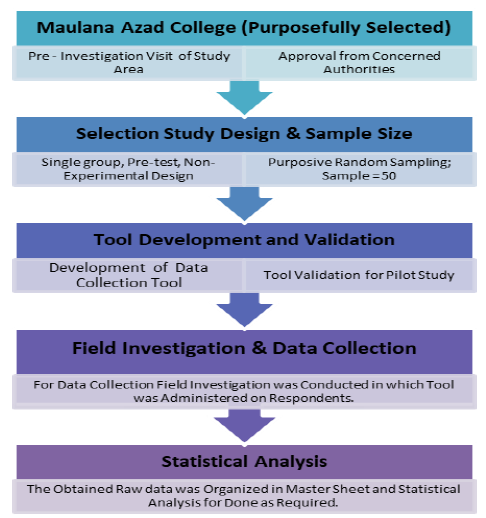Assessment of Nutritional Knowledge and Practices Regarding Canteen Snacks among Youth in Maharashtra
DOI:
https://doi.org/10.5281/zenodo.13766752Keywords:
nutrition, knowledge, practices, college students, canteen, snacksAbstract
Introduction- 1/5th Indian populas is adolescents & 66% are U5, making India a young country. Due to increasing urbanization & industrialization the reproductive young population in India is undergoing dramatic physical, financial, social, food behavior and cultural transitions which dramatically are impacting the general & nutritional health and well-being of individuals. In latest studies, non-nutritious institutional food supply, food menu and deficient food choices of youth are the top causative factors for making LSDs epidemic along with other DD. NCDs in India will cost national loss ~3.6 trillion and heart wrenching 63% preventable NCDs deaths by 2030. All this makes the present study an exigency towards food serving & health care sector.
Methodology- For present study single sample, pre-test and non-experimental developmental research design was adapted to select sample size of 50 of 15 – 45 yrs. (male & female) based on inclusion & exclusion criteria through purposive random sampling from the study area at Aurangabad. For data collection structured interview schedule which consisted of 3 sections namely – Sociodemographic profile, assessment of knowledge and assessment of practices was developed & validated from experts before field administration. Data was tabulated in MS-Excel 2007 version and statistical analysis was done using IBM SPSS advanced statistics 29.0 (5725-A54) version.
Objectives- 1. To assess the nutritional knowledge regarding canteen snacks of college students. 2. To assess the practices regarding canteen snacks of college students.
Results & Discussion- The overall assessment of respondent’s nutritional knowledge on category basis shows, 30% had knowledge of food groups, 34% knows about nutrients, 64% had knowledge related to cooking methods, 76% had food choices knowledge, 95% had knowledge of my plate, and 80% had knowledge of food menu.
It shows that in 14% prefer eating in canteen daily, 14% prefer alternately, 32% weekly and 40% sometimes/ never; in type of snacks preferred most 64% prefer fried foods, 24% prefer packed foods, and 10% prefer drinks like cola, etc.; 20% consume millets daily in meals, 8% alternately, 26% weekly and 46% sometimes/never; 26% consumes vegetables daily in snack items, 6% alternately, 18% weekly, 50% sometimes/ never; 38% were consuming fruits daily, 26% alternately, 32% weekly and 4% some/never; 48% preferred eating sprouts daily and 52% did not preferred eating sprouts on daily basis; 24% consume packed fruit juices, 54% consume fresh fruit juices, 14% aerated drinks and 8% consume flavored; 46% always smell food for food spoilage, 34% smell sometimes, 14% never and 6% can’t say; 32% eat fast food 1 time/day, 20% eat 2 times/day, 4% eat 3 times/day & 44% responded none; and regarding the taste 18% prefer sweet taste, 47% prefer sour and 78% prefer spicy.
Downloads
References
Santhaya, K. G. (2023). How far we come in promoting sexual and reproductive health and rights for adolescents?. The Indian Forum – A Journal Magazine on Contemporary Issues. https://www.theindiaforum.in/health/how-far-have-we-come-promoting-sexual-and-reproductive-health-and-rights-adolescents#:~:text=The%20sexual%20and%20reproductive%20health,sub-population%20differences%20still%20exist.
Pandey, B. et al. (2020). Urbanization and food consumption in India. Scientific Reports, 10, 17241. https://doi.org/10.1038/s41598-020-73313-8. https://www.nature.com/articles/s41598-020-73313-8.
Sharma, S. et al. (2023). Study on consumption of fast food and its association with BMI among medical students in a tertiary care center of eastern India. International Journal of Nutrition, Pharmacology and Neurological Diseases, 13(3), 140–144. doi:10.4103/ijnpnd.ijnpnd_2_23.
Mishra, I. K (2023, August 02). National youth policy – Will it help India reap the promised demographic dividend?. Expert Speak, Young Voices – Observer Research Foundation. https://www.orfonline.org/expert-speak/national-youth-policy#:~:text=Published%20on%20Aug%2002%2C%202023&text=With%2066%20percent%20of%20its,the%20world's%20largest%20youth%20population.
Sharma, P. (2023, May 17). Non-communicable diseases to cost India around $ 3.6 trillion by 2030. Mint. https://www.livemint.com/news/india/noncommunicable-diseases-to-cost-india-around-3-6-trillion-by-2030-11684321146414.html.
Kumar, G. S. et al. (2022). Evolving food choices among the urban Indian middle – class: A qualitative Study. Front. Nutr, 9. https://doi.org/10.3389/fnut.2022.844413. https://www.frontiersin.org/articles/10.3389/fnut.2022.844413/full.
Moriyani, V. et al. (2022). Assessment knowledge regarding healthy food and actual eating habits of adolescent students (13 – 16 years). The Pharma Innovation Journal, 11(10), 1294–1298.
Matela, H. et al. (2022). A critical comparison of Indian school food and nutritional guidelines with the WHO-nutrition friendly school initiative and the review of existing implementation scenario. Nutrition and Health, 1–13. doi:10.1177/02601060221105734.
Jeinie, M. H. B. et al. (2021). Comparison of nutritional knowledge, attitudes and practices between urban and rural secondary school students: A cross-sectional study in Sabah, East Malaysia. Foods, 10(9), 2037. doi:https://doi.org/10.3390/foods10092037.
Hassan, M. R. et al. (2015). Knowledge, attitude and practices of healthy eating and associated factors among university students in Selangor, Malaysia. Pakistan Journal of Nutrition, 14(12), 892–897.
https://www.worldometers.info/world-population/india-population/.
https://www.urbanet.info/urbanisation-in-india-infographics/.
https://www.mordorintelligence.com/industry-reports/india-foodservice-market.

Downloads
Published
How to Cite
Issue
Section
ARK
License
Copyright (c) 2024 Kanishka Singh, Maseera Khan, Mayuri Gaikwad

This work is licensed under a Creative Commons Attribution 4.0 International License.
Research Articles in 'Applied Science and Biotechnology Journal for Advanced Research' are Open Access articles published under the Creative Commons CC BY License Creative Commons Attribution 4.0 International License http://creativecommons.org/licenses/by/4.0/. This license allows you to share – copy and redistribute the material in any medium or format. Adapt – remix, transform, and build upon the material for any purpose, even commercially.










